
How to Use MQ6: Examples, Pinouts, and Specs
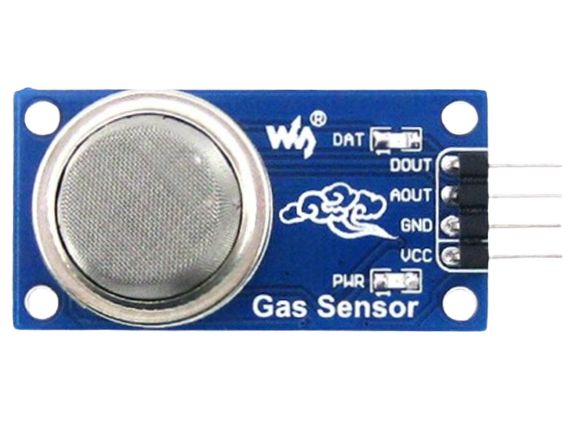
 Design with MQ6 in Cirkit Designer
Design with MQ6 in Cirkit DesignerIntroduction
The MQ6 is a semiconductor gas sensor designed for the detection of LPG (liquefied petroleum gas), iso-butane, and propane. It is widely used in various gas leakage detection devices for residential and commercial environments. The sensor's high sensitivity and fast response time make it an ideal choice for safety systems in gas-powered appliances, industrial controls, and air quality monitoring.
Explore Projects Built with MQ6
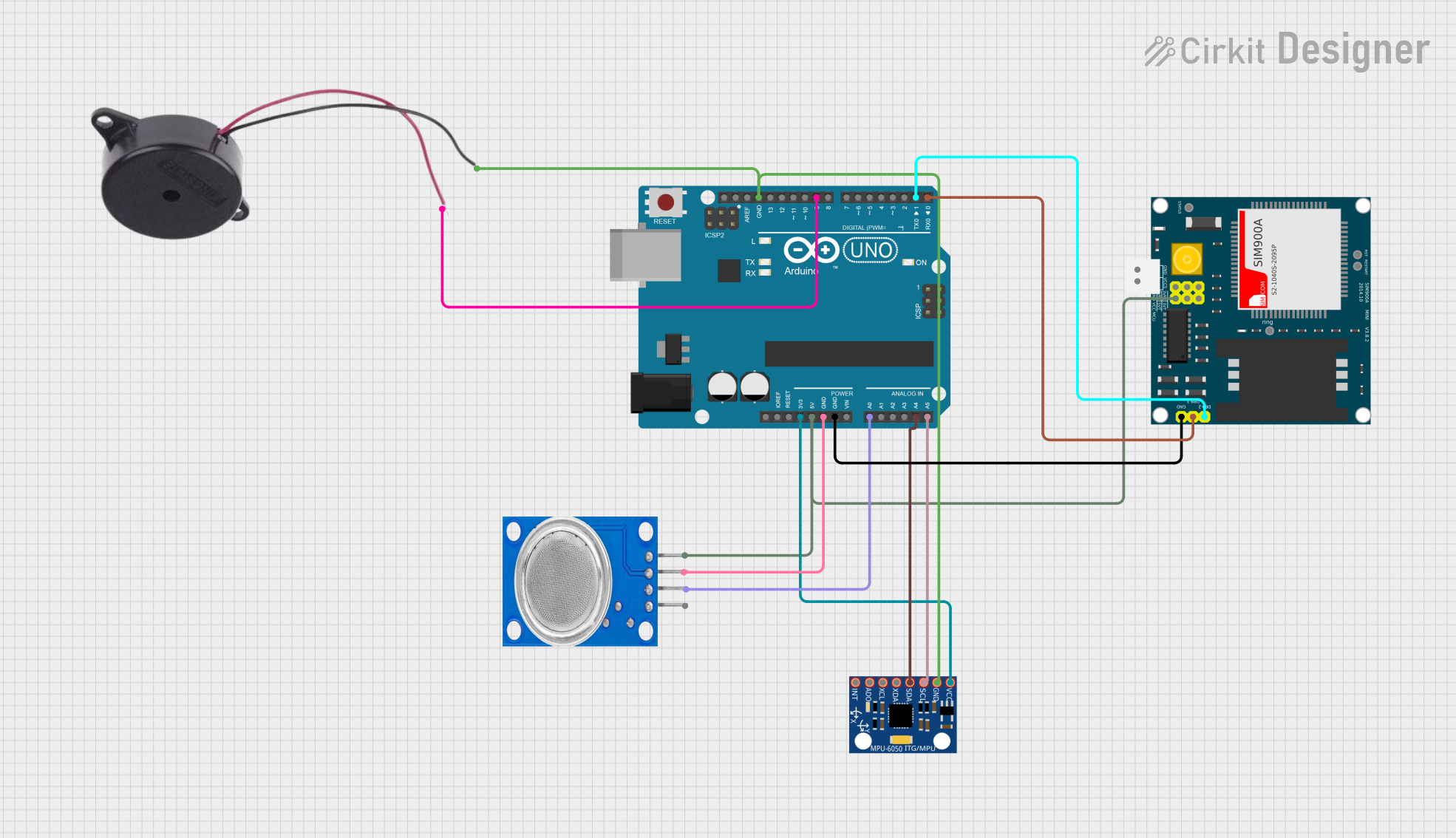
 Open Project in Cirkit Designer
Open Project in Cirkit Designer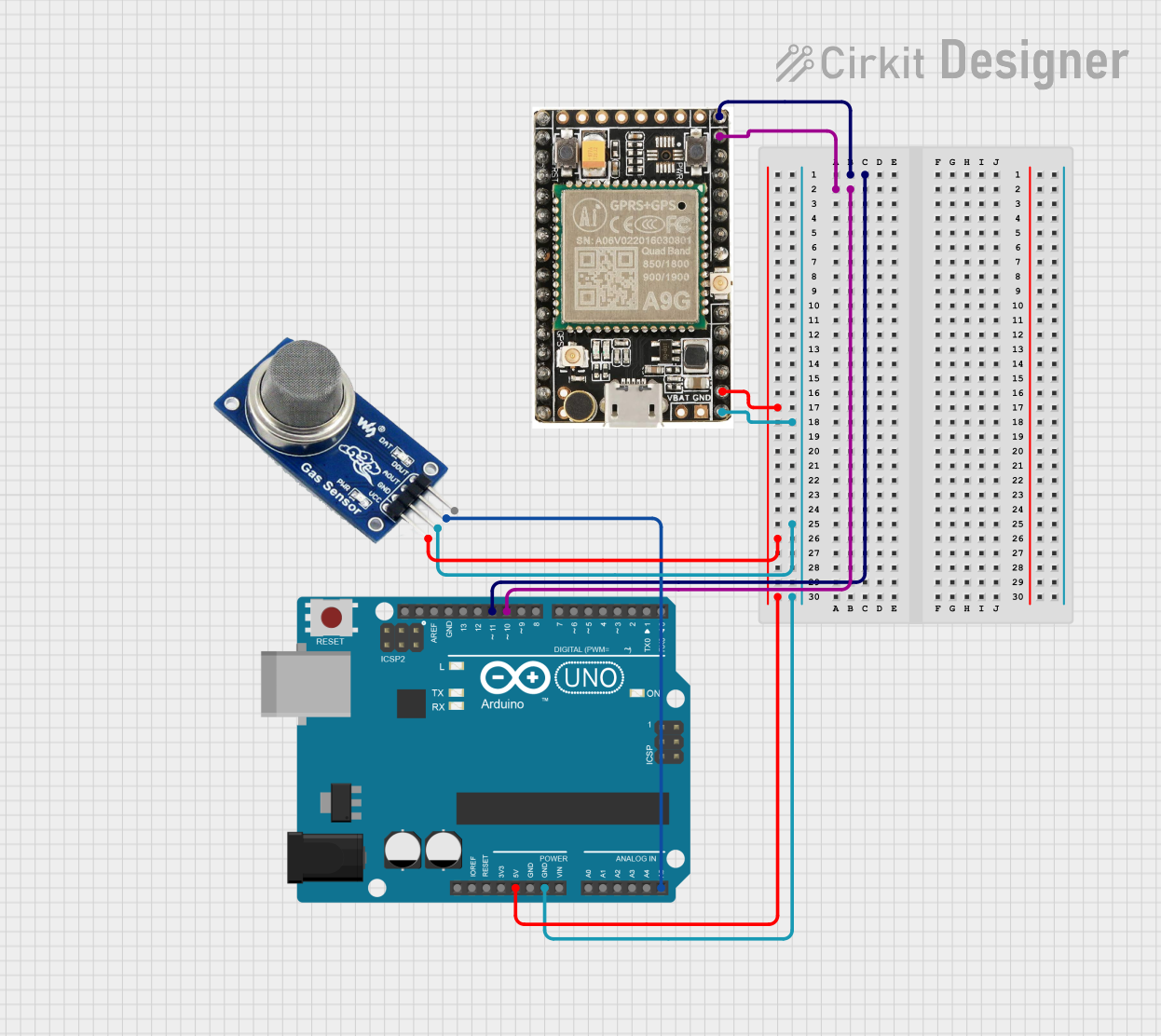
 Open Project in Cirkit Designer
Open Project in Cirkit Designer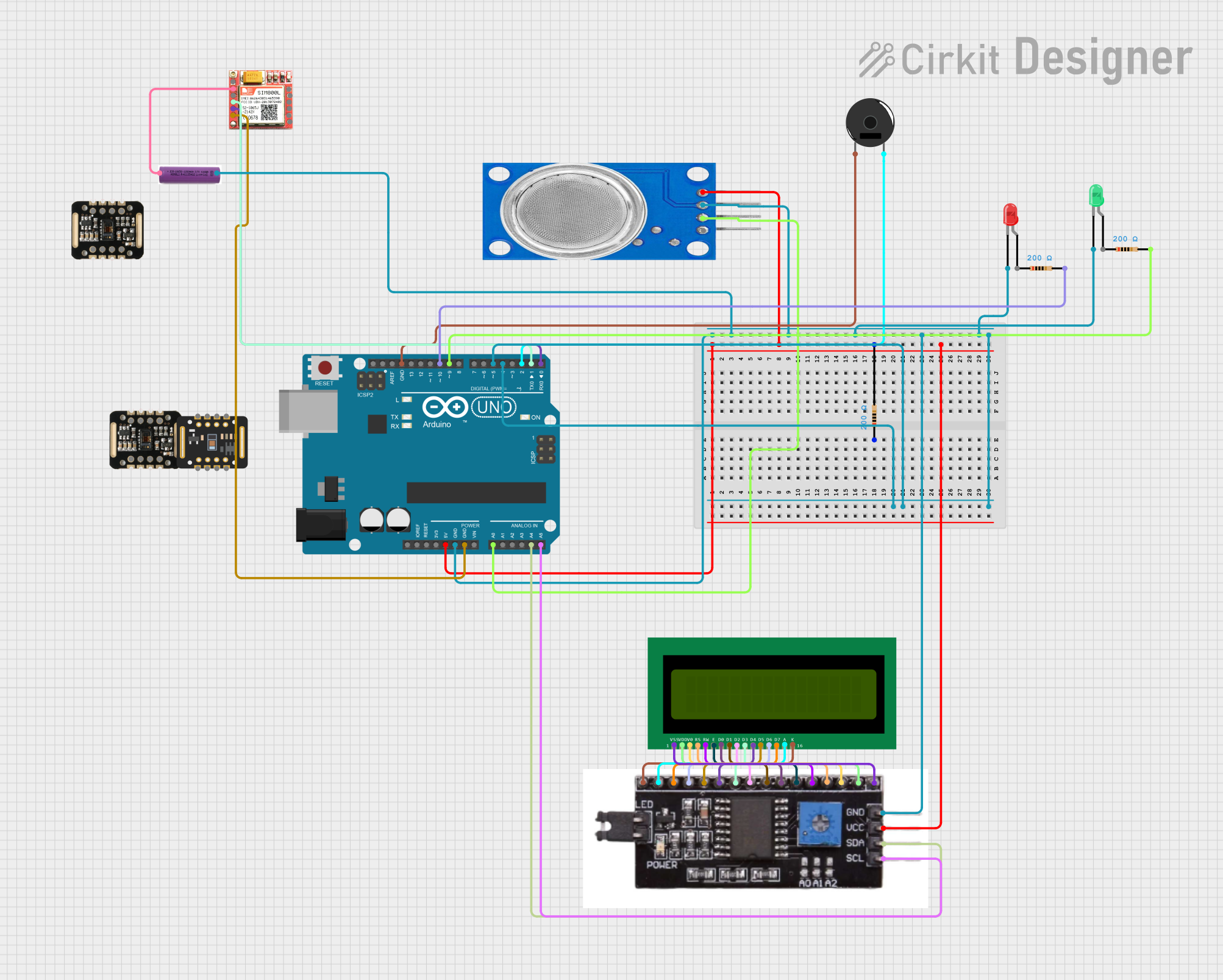
 Open Project in Cirkit Designer
Open Project in Cirkit Designer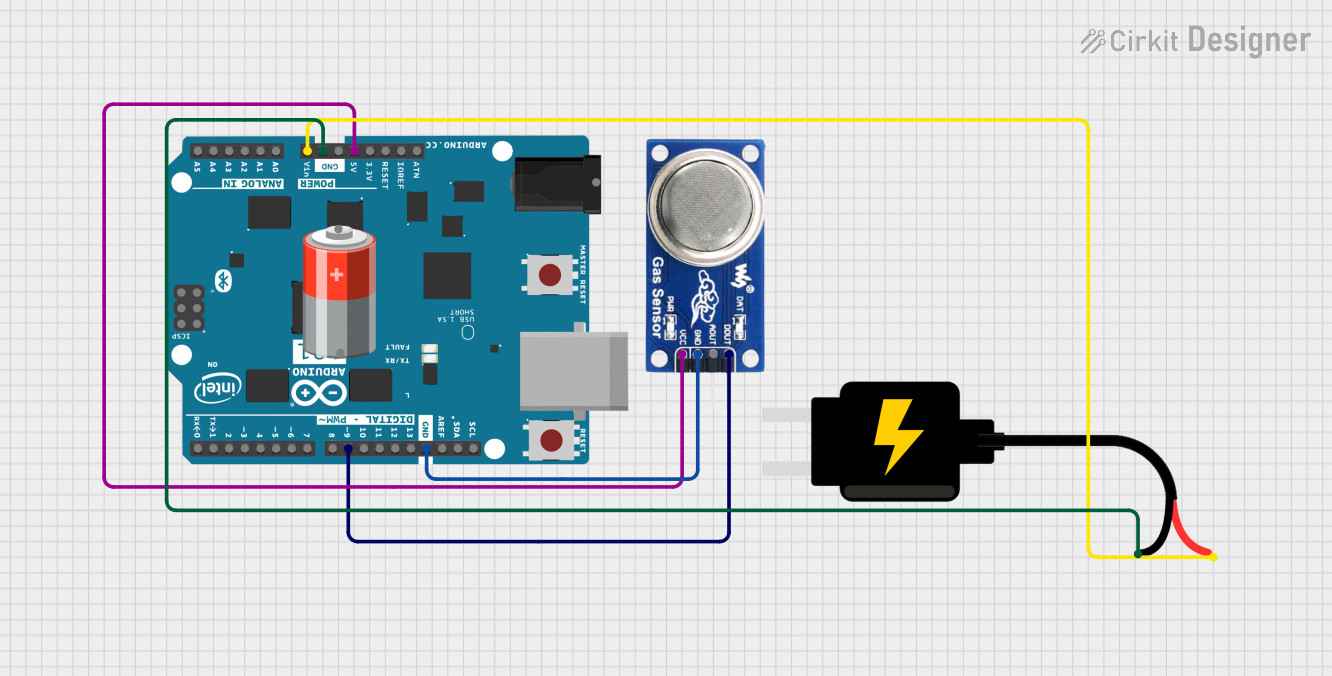
 Open Project in Cirkit Designer
Open Project in Cirkit DesignerExplore Projects Built with MQ6

 Open Project in Cirkit Designer
Open Project in Cirkit Designer
 Open Project in Cirkit Designer
Open Project in Cirkit Designer
 Open Project in Cirkit Designer
Open Project in Cirkit Designer
 Open Project in Cirkit Designer
Open Project in Cirkit DesignerCommon Applications and Use Cases
- Domestic and industrial gas leak detectors
- Portable gas detectors
- Gas-powered vehicle fuel level detection
- Air quality monitoring in environments where flammable gases are present
Technical Specifications
Key Technical Details
- Sensor Type: Semiconductor
- Detection Gases: LPG, iso-butane, propane
- Concentration Range: 200 to 10,000 ppm (parts per million)
- Supply Voltage: 5V ±0.1
- Heating Voltage: 5V ±0.1 (High and Low duty cycle)
- Load Resistance: Adjustable
- Heater Resistance: 33Ω ±5%
- Heating Consumption: Approx. 800mW
- Operating Temperature: -10°C to 50°C
- Storage Temperature: -20°C to 70°C
- Humidity Range: 95% RH or less (non-condensing)
Pin Configuration and Descriptions
| Pin Number | Pin Name | Description |
|---|---|---|
| 1 | VCC | Power supply (5V) |
| 2 | GND | Ground |
| 3 | DOUT | Digital output (TTL logic level) |
| 4 | AOUT | Analog output (proportional to gas level) |
Usage Instructions
How to Use the MQ6 in a Circuit
- Power Supply: Connect the VCC pin to a 5V power supply and the GND pin to the ground.
- Preheating: Before using the sensor for accurate readings, preheat the sensor for at least 20 minutes.
- Analog Output: Connect the AOUT pin to an analog input on your microcontroller to read the gas concentration levels.
- Digital Output: Connect the DOUT pin to a digital input on your microcontroller if you want to use a predefined threshold level for gas detection.
Important Considerations and Best Practices
- Ensure proper ventilation around the sensor to allow gas diffusion.
- Avoid exposure to high concentrations of gas for extended periods to prevent sensor poisoning.
- Calibrate the sensor periodically to maintain accuracy.
- Use a load resistor in the range recommended by the manufacturer for the AOUT pin.
- Avoid using the sensor in extremely humid or dusty environments.
Troubleshooting and FAQs
Common Issues
- Inaccurate Readings: Ensure the sensor has been preheated and calibrated correctly. Check for any environmental factors that may affect the sensor's performance.
- No Response: Verify the power supply and connections. Ensure the sensor is not damaged.
Solutions and Tips for Troubleshooting
- Preheating: Always preheat the sensor before use to stabilize its readings.
- Calibration: Perform regular calibrations using known gas concentrations to maintain accuracy.
- Environmental Factors: Be aware of the operating temperature and humidity range and avoid using the sensor beyond these limits.
FAQs
Q: How often should the MQ6 sensor be calibrated? A: Calibration frequency depends on the usage and the environment. It is recommended to calibrate the sensor every 6 months or whenever there is a significant change in the environment where it is used.
Q: Can the MQ6 sensor detect natural gas? A: The MQ6 is primarily designed for LPG, iso-butane, and propane. It may have some sensitivity to natural gas (methane), but it is not specifically calibrated for it.
Q: What is the lifespan of the MQ6 sensor? A: The typical lifespan of the MQ6 sensor is around 5 years, depending on the operating conditions and exposure to gases.
Example Arduino Code
// MQ6 Gas Sensor Example Code for Arduino UNO
int analogPin = A0; // Analog input pin connected to AOUT on the sensor
int digitalPin = 2; // Digital input pin connected to DOUT on the sensor
int sensorValue = 0; // Variable to store the sensor value
void setup() {
pinMode(digitalPin, INPUT); // Set the digital pin as input
Serial.begin(9600); // Start serial communication at 9600 baud
}
void loop() {
sensorValue = analogRead(analogPin); // Read the analog value from sensor
Serial.print("Gas concentration: ");
Serial.println(sensorValue); // Print the gas concentration
if (digitalRead(digitalPin) == HIGH) {
// Check if the digital pin is HIGH
Serial.println("Gas detected!");
} else {
Serial.println("No gas detected.");
}
delay(1000); // Wait for 1 second before the next loop
}
Note: The above code is a simple example to get started with the MQ6 sensor. For accurate measurements, the sensor requires calibration with known gas concentrations. The analog value read from the sensor can be converted to ppm using a calibration curve specific to the target gas.